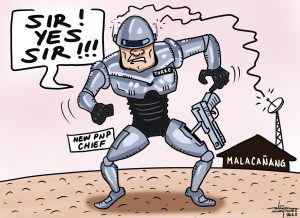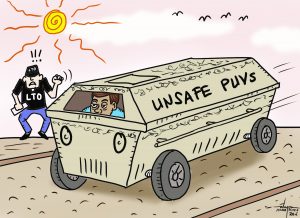IT IS strange finding out about “Bagong Pilipinas” (New Philippines), the new “governance and leadership campaign” of the administration of President Ferdinand R. Marcos, Jr., late last Saturday night as “just in” on my social media feed.
I find it even stranger that the announcement was made by the Presidential Communications Office through a release of a copy of Memorandum Circular No. 24 signed on July 3, 2023 by Executive Secretary Lucas P. Bersamin.
If it was signed last July 3, Monday, why are they launching it only after two weeks and late on July 15, a Saturday? Was it meant to be the big story on Sunday, a slow news day? Or were they hoping people will have an entire weekend to adjust to the idea before forming an opinion for or against it? Is it because it is perceived that predominantly Christian Filipinos are kinder and more forgiving on Sunday, the Lord’s day?
After the very public grand launching of the Department of Tourism’s “Love the Philippines” campaign and the Philippine Amusement and Gaming Corporation’s new logo with no less than the President and the First Lady in attendance, this “Bagong Pilipinas” campaign launch is almost designed to be under the radar.
It is not even trending on social media this weekend. Is this deliberate with a genius strategy behind it that we could not yet detect at the moment?
So I have read and re-read the Memorandum Circular launching the “Bagong Pilipinas” campaign. I reviewed all the six (6) “whereas” to understand the reason behind the campaign and why it is called what it is called.
The first “whereas” talks about how Executive Order No. 14 series of 2023 approved and adopted the Philippine Development Plan 2023-2028, which is essentially an old plan with a new timeframe.
The second “whereas” mentions the President’s 8-point socio-economic agenda, which added only one new thing, the mention of the Covid-19 pandemic (probably the justification of why we have the same old plan with a new timeframe).
The third “whereas” introduces another version of 4Ps – the 4PH. It is the “Pambansang Pabahay Para sa Pilipino.” Well, it is still 4Ps but with “H” because it is housing, get it?
Then the fourth “whereas” tries (and I think fails) to explain why there is a need to have a governance and leadership campaign to do all of the three points mentioned in the preceding “whereases” (it sounds so bad in my head, haha).
Allow me to quote the paragraph here for those of you who are too lazy to search for it online: “towards attaining a promising future for the nation, this Administration commits to embody a brand of governance and leadership that is focused on implementing an all-inclusive plan for economic and social transformation.”
Imagine that being delivered with confidence and enough voice projection by a pageant contestant during the question and answer portion where she is given only 30 seconds to give her answer. The audience will be impressed by her delivery but after a few seconds, upon reflection on what she actually said, will ask: “Ano daw?” (What did she say?)
So imagine again the contestant being asked a follow-up question: And what will the brand of governance and leadership be called?
The answer, embodied in the fifth “whereas” is: “Bagong Pilipinas is the overarching theme of the Administration’s brand of governance and leadership, which calls for deep and fundamental transformations in all sectors of society and government, and fosters the State’s commitment towards the attainment of comprehensive policy reforms and full economic recovery.”
Key words are “deep and fundamental transformations” and “comprehensive reforms and full recovery.” They are talking about change because change in Filipino is “pagbabago” from the root word “bago” or new. Therefore, “Bagong Pilipinas.” Yes, like “Bagong Lipunan.”
Wait, there’s more! In the sixth and final “whereas”: “Bagong Pilipinas is characterized by a principled, accountable, and dependable government reinforced by unified institutions of society, whose common objective is to realize the goals and aspirations of every Filipino.”
As a wise friend said in reaction: “Grabe maka-generic statement!” Very generic that it can mean just about anything to anyone. So it is not branded; it’s generic.
Why did we need this new brand? I did not even realize we have an existing brand in the first place. If the new brand is “principled, accountable and dependable,” what was the old brand then?
How will the “Bagong Pilipinas” campaign change the governance and leadership in this country to “realize the goals and aspirations of every Filipino”? What is its theory of change (if we do this, it will lead to this)? Does it even come from a clear vision and framework?
We will never know how the mind of this new leadership works because we are not consulted and asked to participate. Not even in the simple making of the logo. It is as if all this branding and rebranding is not about the Philippines or the Filipinos.
It is not about us. It is just about them. That’s what is new, Philippines. They got us to pay for all of it, officially.


